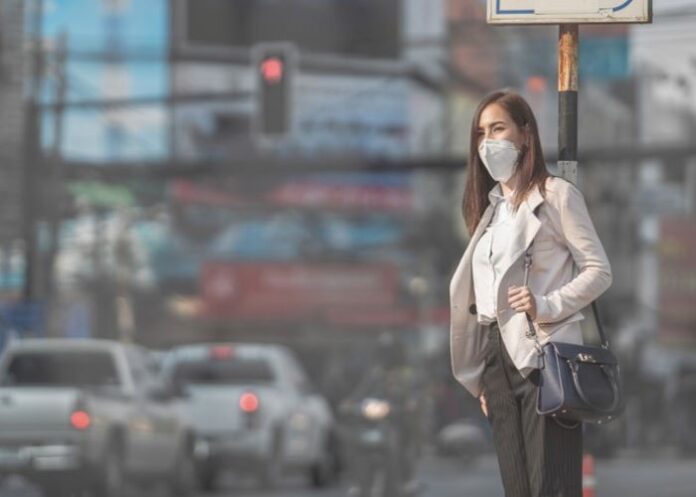A global study has revealed that air pollution is responsible for almost 1m stillbirths every year, the research estimating that nearly half might be linked to exposure to pollution particles smaller than 2.5 microns (PM2.5), mostly produced from the burning of fossil fuels.
The study covered 137 countries in Asia, Africa and Latin America, where 98% of stillbirths occur. Dirty air was already known to increase the risk of stillbirth but the research is the first to assess the number of foetal deaths. The work was based on data from more than 45 000 stillbirths and live births, reports The Guardian.
Stillbirths were described as a “neglected tragedy” in a 2020 report published by Unicef. The heavy impact of stillbirths on mothers and their families would mean that action to prevent them would boost women’s health and equality, the scientists behind the new work said.
The epidemiological study did not examine how small particle pollution could cause stillbirths. But it followed the revelation in October that toxic air pollution particles were found in the lungs and brains of foetuses. Air pollution particles were first detected in placentas in 2018 and by then dirty air was known to strongly correlate with increased miscarriages, premature births, low birth weights and disturbed brain development.
“Meeting the World Health Organisation (WHO) air quality targets could prevent a considerable number of stillbirths,” said the scientists, led by Dr Tao Xue at Peking University in China. “Current efforts to prevent stillbirth focus on medical service improvements but compared to clinical risk factors, environmental ones are usually unseen.”
The scientists added: “Clean air policies, which have been enacted in some countries, like China, can prevent stillbirths. And personal protections against air pollution, i.e. wearing masks, installing air purifiers, and avoiding going outside when air pollution occurs could also protect vulnerable pregnant women.”
The research, published in Nature Communications, used data on stillbirths and air pollution between 1998 and 2016 from 54 low- and middle-income countries (LMIC), including Pakistan, India and Nigeria. This was used to estimate the number of stillbirths attributable to PM2.5 exposure across the 137 LMIC countries, taking into account the fact that the impact of dirty air was greater on older mothers.
Virtually all of the mothers in the study were exposed to PM2.5 levels above the WHO’s current guideline level of 5 micrograms per cubic metre (μg/m3). There were 2.09m stillbirths recorded in the studied countries in 2015, and 950 000 of them (45%) were attributable to exposure above the 5 μg/m3 level, the study estimated.
The WHO guideline for PM2.5 was 10 μg/m3 until 2021 and 99% of mothers in the study were exposed to higher levels of dirty air. This was linked to 830 000 stillbirths, or 40% of the total, the study found. The proportion of stillbirths attributed to PM2.5 pollution was particularly high in Pakistan, India, Nigeria and China. Overall, the researchers found that an increase in PM2.5 exposure of about 10 µg/m3 was associated with an 11% increase in the risk of stillbirth.
The total number of stillbirths fell from 2.31m in 2010 to 1.93m in 2019. The researchers said cuts in air pollution in some countries, such as China, could be a significant reason for this fall. They estimated that reducing air pollution to the 10 ug/m3 level could today prevent 710 000 stillbirths a year. “Due to universal exposure to air pollution, it is one of the most important contributors to global stillbirth,” Xue said.
How air pollution may cause stillbirths is not yet clear. But the researchers said pollution particles passing through the placenta could cause “irreversible embryonic damage” and could also harm the placenta itself. Air pollution could also restrict the ability of the mother’s body to pass oxygen to the foetus.
The scientists said while the global number of stillbirths was falling, there was no decrease in about half the LMIC countries assessed. They noted that the rate of decline of stillbirths was slower than the decline in mortality for children under five-years-old.
“This suggests that efforts to promote maternal health are unequal for different adverse outcomes, and that interventions relevant to stillbirths are inadequate,” they said.
Study details
Estimation of stillbirths attributable to ambient fine particles in 137 countries
Tao Xue, Mingkun Tong, Jiajianghui Li, Ruohan Wang, Tianjia Guan, Jiwei Li, Pengfei Li, Hengyi Liu, Hong Lu, Yanshun Li & Tong Zhu.
Published in Nature Communications on 29 November 2022
Abstract
Gestational exposure to ambient fine particles (PM2.5) increases the risk of stillbirth, but the related disease burden is unknown, particularly in low- and middle-income countries (LMICs). We combine state-of-the-art estimates on stillbirths, and multiple exposure–response functions obtained from previous meta-analyses or derived by a self-matched case-control study in 54 LMICs. 13,870 stillbirths and 32,449 livebirths are extracted from 113 geocoded surveys from the Demographic and Health Surveys. Each stillbirth is compared to livebirth(s) of the same mother using a conditional logit regression. We find that 10-µg/m3 increase of PM2.5 is associated with an 11.0% (95% confidence interval [CI] 6.4, 15.7) increase in the risk of stillbirth, and the association is significantly enhanced by maternal age. Based on age-specific nonlinear PM2.5–stillbirth curves, we evaluate the PM2.5-related stillbirths in 137 countries. In 2015, of 2.09 (95% CI: 1.98, 2.20) million stillbirths, 0.83 (0.54, 1.08) million or 39.7% (26.1, 50.8) are attributable to PM2.5 exposure exceeding the reference level of 10 μg/m3. In LMICs, preventing pregnant women from being exposed to PM2.5 can improve maternal health.
The Guardian article – Air pollution linked to almost a million stillbirths a year (Open access)
See more from MedicalBrief archives:
Scientists discover how air pollution triggers cells into cancerous states
One in six people dying prematurely from air pollution
Study finds air-pollution’s impact on health may be worse than thought

